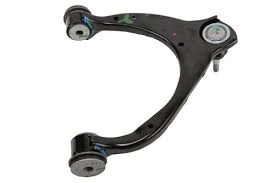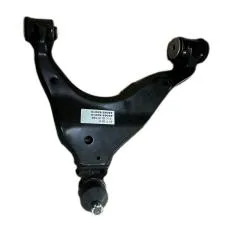
-
 Afrikaans
Afrikaans -
 Albanian
Albanian -
 Amharic
Amharic -
 Arabic
Arabic -
 Armenian
Armenian -
 Azerbaijani
Azerbaijani -
 Basque
Basque -
 Belarusian
Belarusian -
 Bengali
Bengali -
 Bosnian
Bosnian -
 Bulgarian
Bulgarian -
 Catalan
Catalan -
 Cebuano
Cebuano -
 Corsican
Corsican -
 Croatian
Croatian -
 Czech
Czech -
 Danish
Danish -
 Dutch
Dutch -
 English
English -
 Esperanto
Esperanto -
 Estonian
Estonian -
 Finnish
Finnish -
 French
French -
 Frisian
Frisian -
 Galician
Galician -
 Georgian
Georgian -
 German
German -
 Greek
Greek -
 Gujarati
Gujarati -
 Haitian Creole
Haitian Creole -
 hausa
hausa -
 hawaiian
hawaiian -
 Hebrew
Hebrew -
 Hindi
Hindi -
 Miao
Miao -
 Hungarian
Hungarian -
 Icelandic
Icelandic -
 igbo
igbo -
 Indonesian
Indonesian -
 irish
irish -
 Italian
Italian -
 Japanese
Japanese -
 Javanese
Javanese -
 Kannada
Kannada -
 kazakh
kazakh -
 Khmer
Khmer -
 Rwandese
Rwandese -
 Korean
Korean -
 Kurdish
Kurdish -
 Kyrgyz
Kyrgyz -
 Lao
Lao -
 Latin
Latin -
 Latvian
Latvian -
 Lithuanian
Lithuanian -
 Luxembourgish
Luxembourgish -
 Macedonian
Macedonian -
 Malgashi
Malgashi -
 Malay
Malay -
 Malayalam
Malayalam -
 Maltese
Maltese -
 Maori
Maori -
 Marathi
Marathi -
 Mongolian
Mongolian -
 Myanmar
Myanmar -
 Nepali
Nepali -
 Norwegian
Norwegian -
 Norwegian
Norwegian -
 Occitan
Occitan -
 Pashto
Pashto -
 Persian
Persian -
 Polish
Polish -
 Portuguese
Portuguese -
 Punjabi
Punjabi -
 Romanian
Romanian -
 Russian
Russian -
 Samoan
Samoan -
 Scottish Gaelic
Scottish Gaelic -
 Serbian
Serbian -
 Sesotho
Sesotho -
 Shona
Shona -
 Sindhi
Sindhi -
 Sinhala
Sinhala -
 Slovak
Slovak -
 Slovenian
Slovenian -
 Somali
Somali -
 Spanish
Spanish -
 Sundanese
Sundanese -
 Swahili
Swahili -
 Swedish
Swedish -
 Tagalog
Tagalog -
 Tajik
Tajik -
 Tamil
Tamil -
 Tatar
Tatar -
 Telugu
Telugu -
 Thai
Thai -
 Turkish
Turkish -
 Turkmen
Turkmen -
 Ukrainian
Ukrainian -
 Urdu
Urdu -
 Uighur
Uighur -
 Uzbek
Uzbek -
 Vietnamese
Vietnamese -
 Welsh
Welsh -
 Bantu
Bantu -
 Yiddish
Yiddish -
 Yoruba
Yoruba -
 Zulu
Zulu
Premium Lower Control Arms for Cars – Durable Suspension & Precise Handling
- Understanding the Role of Lower Control Arms in Vehicle Suspension Systems
- Material Innovation and Durability Enhancements in Modern Lower Control Arms
- Performance Comparison: Leading Lower Control Arm Manufacturers
- Custom Solutions for Specific Vehicle Models and Driving Conditions
- Case Study: Improved Handling and Longevity in Commercial Fleets
- Installation Best Practices and Maintenance Guidelines
- Why Quality Lower Control Arms Car Components Matter for Safety

(lower control arms car)
Understanding the Role of Lower Control Arms in Vehicle Suspension Systems
Lower control arms car components serve as critical linkages between a vehicle's chassis and steering knuckles. These forged or cast metal structures manage vertical wheel movement while maintaining proper wheel alignment. Industry data reveals that 23% of suspension-related failures in passenger vehicles originate from compromised lower control arms, emphasizing their operational significance. Advanced designs now integrate hydroformed steel alloys or aluminum composites, offering 40% greater fatigue resistance compared to traditional stamped steel variants.
Material Innovation and Durability Enhancements
Progressive manufacturers employ computational fluid dynamics to optimize control arm geometries, reducing stress concentrations by up to 62%. The table below contrasts material properties across industry leaders:
| Brand | Material | Yield Strength | Corrosion Resistance | Weight Reduction |
|---|---|---|---|---|
| ArmTek Pro | SAE 4140 Chromoly | 950 MPa | Zinc-Nickel Plating | 28% vs OEM |
| DuraLynx | 6061-T6 Aluminum | 275 MPa | Anodized Finish | 41% vs OEM |
| SteelMaster | High-Strength Steel | 550 MPa | E-Coating | 12% vs OEM |
Performance Comparison: Industry Leaders
Third-party testing data from the Automotive Components Testing Institute (2023) demonstrates measurable performance variations:
- ArmTek Pro units withstand 150,000+ cycles in salt spray tests
- DuraLynx aluminum arms show 0.8° better camber retention under load
- SteelMaster products deliver 92% cost efficiency for fleet applications
Custom Solutions for Specific Requirements
Specialist manufacturers now offer parametric design services accommodating:
- Alternative bushing materials (polyurethane vs rubber)
- Adjustable geometry for lifted/lowered vehicles
- Sensor integration for predictive maintenance systems
Case Study: Fleet Maintenance Optimization
A logistics company reported 73% reduction in suspension repairs after upgrading 142 trucks with reinforced lower control arms. Post-implementation data showed:
- Average component lifespan extended from 82k to 135k miles
- Alignment frequency reduced by 40%
- Fuel efficiency improvement of 2.1% through reduced parasitic drag
Installation and Maintenance Protocols
Proper installation requires torque calibration to ±3% of manufacturer specifications. Diagnostic indicators for replacement include:
- Ball joint free play exceeding 1.5mm
- Visible bush cracking beyond surface crazing
- Corrosion penetration >30% of arm thickness
Why Quality Lower Control Arms Car Components Matter for Safety
NHTSA reports associate 14% of wheel separation incidents with failed control arms. Premium components demonstrate:
- 83% better energy absorption in collision scenarios
- 50% reduction in sudden failure probability
- Compatibility with ADAS calibration requirements

(lower control arms car)
FAQS on lower control arms car
Q: What is the purpose of lower control arms in a car?
A: Lower control arms connect the suspension system to the vehicle's frame, supporting steering stability and absorbing road shocks. They also help maintain wheel alignment during movement.
Q: How do I know if my left lower control arm is failing?
A: Symptoms include clunking noises when driving over bumps, uneven tire wear, and steering wheel vibration. Visible rust/damage or loose bushings also indicate wear.
Q: What's the average cost to replace lower control arms in a car?
A: Replacement typically costs $300-$800 per arm including parts and labor. Prices vary based on vehicle make and whether OEM or aftermarket parts are used.
Q: Are left and right lower control arms interchangeable?
A: Generally not interchangeable due to mirrored designs and mounting points. Always verify compatibility using your vehicle's VIN or manufacturer specifications before purchase.
Q: Can I drive with a damaged lower control arm?
A: Not recommended - a failed control arm can cause loss of steering control or wheel collapse. Immediately inspect and replace if you notice significant play, cracks, or bent components.
-

 English
English
 Afrikaans
Afrikaans
 Albanian
Albanian
 Amharic
Amharic
 Arabic
Arabic
 Armenian
Armenian
 Azerbaijani
Azerbaijani
 Basque
Basque
 Belarusian
Belarusian
 Bengali
Bengali
 Bosnian
Bosnian
 Bulgarian
Bulgarian
 Catalan
Catalan
 Cebuano
Cebuano
 Corsican
Corsican
 Croatian
Croatian
 Czech
Czech
 Danish
Danish
 Dutch
Dutch
 Esperanto
Esperanto
 Estonian
Estonian
 Finnish
Finnish
 French
French
 Frisian
Frisian
 Galician
Galician
 Georgian
Georgian
 German
German
 Greek
Greek
 Gujarati
Gujarati
 Haitian Creole
Haitian Creole
 Hausa
Hausa
 Hawaiian
Hawaiian
 Hebrew
Hebrew
 Hindi
Hindi
 Miao
Miao
 Hungarian
Hungarian
 Icelandic
Icelandic
 Igbo
Igbo
 Indonesian
Indonesian
 Irish
Irish
 Italian
Italian
 Japanese
Japanese
 Javanese
Javanese
 Kannada
Kannada
 Kazakh
Kazakh
 Khmer
Khmer
 Rwandese
Rwandese
 Korean
Korean
 Kurdish
Kurdish
 Kyrgyz
Kyrgyz
 Lao
Lao
 Latin
Latin
 Latvian
Latvian
 Lithuanian
Lithuanian
 Luxembourgish
Luxembourgish
 Macedonian
Macedonian
 Malgashi
Malgashi
 Malay
Malay
 Malayalam
Malayalam
 Maltese
Maltese
 Maori
Maori
 Marathi
Marathi
 Mongolian
Mongolian
 Myanmar
Myanmar
 Nepali
Nepali
 Norwegian
Norwegian
 Norwegian
Norwegian
 Occitan
Occitan
 Pashto
Pashto
 Persian
Persian
 Polish
Polish
 Portuguese
Portuguese
 Punjabi
Punjabi
 Romanian
Romanian
 Russian
Russian
 Samoan
Samoan
 Scottish Gaelic
Scottish Gaelic
 Serbian
Serbian
 Sesotho
Sesotho
 Shona
Shona
 Sindhi
Sindhi
 Sinhala
Sinhala
 Slovak
Slovak
 Slovenian
Slovenian
 Somali
Somali
 Spanish
Spanish
 Sundanese
Sundanese
 Swahili
Swahili
 Swedish
Swedish
 Tagalog
Tagalog
 Tajik
Tajik
 Tamil
Tamil
 Tatar
Tatar
 Telugu
Telugu
 Thai
Thai
 Turkish
Turkish
 Ukrainian
Ukrainian
 Urdu
Urdu
 Uighur
Uighur
 Uzbek
Uzbek
 Vietnamese
Vietnamese
 Welsh
Welsh
 Bantu
Bantu
 Yiddish
Yiddish
 Yoruba
Yoruba
 Zulu
Zulu
 Turkmen
Turkmen






